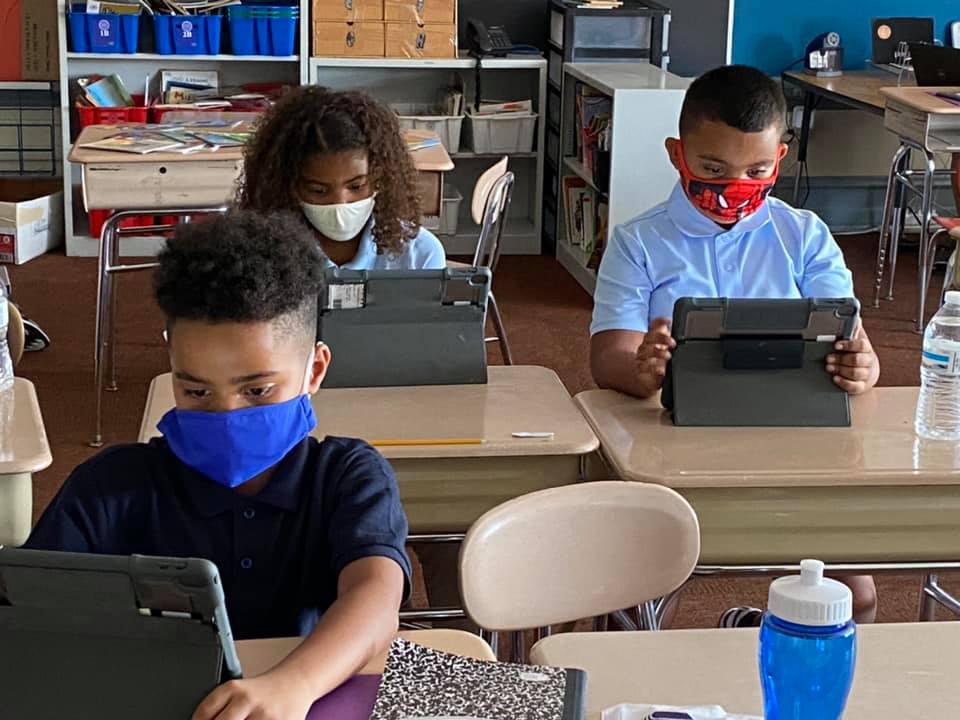

Last week, to learn more about how parents with young children should strategize to minimize the risk from Covid-19 to their children and families, One United Lancaster interviewed Dr. Susan Coffin.
Children under 12 are not yet eligible for Covid-19 vaccination. While the vast majority of pediatric coronavirus infections are mild, a small number have led to hospitalization or even death. Some cases have resulted in children contracting multisystem inflammatory syndrome, a serious condition that involves persistent fever and inflammation and can lead to life-threatening complications.
Meanwhile, children with asymptomatic infections may still pose a risk of transmission to those around them.
Coffin is an expert in vaccine-preventable diseases, pandemic influenza preparedness and the prevention of healthcare-associated infections.
She is a faculty member of the Pediatric Infectious Diseases Epidemiology and Antimicrobial Stewardship (IDEAS) research group at the Center for Pediatric Clinical Effectiveness, an attending physician and associate chief of the Infectious Diseases division at The Children's Hospital of Philadelphia and a professor of Pediatrics at the Perelman School of Medicine at the University of Pennsylvania.
At the time Coffin spoke with One United Lancaster, local school districts in Pennsylvania had the latitude to develop their own Covid-19 policies. Since then, Gov. Tom Wolf has announced a statewide mask mandate, effective Sept. 7, for all public and private K-12 schools and all licensed child care facilities.
The governor did not announce any specific penalties for noncompliance, however, and many parents and public officials remain vehemently opposed to childhood masking. It thus remains uncertain to what extent districts will embrace the mandate and how strictly administrators and educators will choose to enforce it. (Wolf suggested that parents should welcome the policy and advocate for it to school officials.)
The following interview has been edited for length and clarity:
One United Lancaster: What factors should parents with children under 12 be thinking about during the current Covid-19 resurgence?
Dr. Susan Coffin: It's important to remember that every family is different in terms of perceived risk as well as real risk. Decisions will be best made at an individual level. Individuals can protect themselves to a great extent by making good choices about how they interact with others.
Those good choices would include being really consistent about wearing your own mask, even if the other people around you are not, and to wear it correctly — one that fits nicely over the bridge of the nose, conforms well to the cheekbones, isn't gaping at the sides and comes up snug underneath the chin. That's well within our capacity to do, even when others may not be masked.
OUL: What about mask material? N95s versus paper surgical masks versus cloth?
Coffin: Not all masks are created equal. For community settings, I think use of something other than an N95 is fine. N95s are not required. I think, however, community members should look for masks that have at least three layers; and if they're cloth, have a relatively tight weave, avoiding single layer knit gaiters.
Avoid masks that have a valve in them. The valves provide an exit where air escapes without filtration, so that valve defeats the purpose to a large extent.
OUL: If you have children under 12 and you're sending them to a school or day care, what precautions do you want that school or day care to be taking?
Coffin: We know that one of the strongest predictors of a child successfully masking is seeing good quality masking around them. Ideally, teachers and workers would be masking appropriately and consistently themselves.
If not, the staff at these schools and day cares need to be aware of the impact of peer pressure. It's going to be a tough sell to a shy 9 year old who wants to make friends to tell them keep your mask on if all of the other kids on the playground aren't wearing a mask and the teachers aren't being supportive.
OUL: You said "on the playground," which of course is outdoors. Isn't masking far more important indoors than outdoors?
Coffin: That's true. However, I've seen many a playground where there is a dense throng of kids piling on top of each other. Masking always helps when you're in a very crowded circumstance. While we don't advocate in general for masking for outdoor activity, I think it's plausible that there could be a role for it (in some circumstances).
OUL: Apart from masking, are there other precautions you would want schools and day cares to be taking?
Coffin: I want them to support excellent symptom screening, being prompt to identify any child or staff member who has new-onset symptoms, have them go home and get tested. Then, also have them monitoring whether or not people are adhering to their quarantine and isolation durations appropriately, not encouraging teachers to come back prematurely from quarantine if they're exposed or isolation if they're infected.
OUL: What about cleaning surfaces or having certain kinds of ventilation?
Coffin: Cleaning surfaces is probably not as critical, but hand cleaning is always good, so I would want to make sure the setting had ample amounts of hand sanitizer and was encouraging frequent hand cleaning. I don't think anything more than routine once-a-day cleaning would be needed, except when areas are soiled, or used by somebody who's overtly ill.
Ventilation, in my mind is not the most important layer in our mitigation strategy. Uses of simple ventilation techniques such as open windows, etc., are fine for community settings.
OUL: Let's a parent is not seeing these practices followed. What should they do?
Coffin: First, engage with the school administration and school board. The threshold at which you would remove your child from in-person education has a lot to do with what it is that puts your family at risk, what your risk tolerance is, and how does that square with the value your child is getting from in-person as opposed to virtual instruction. Unfortunately, there aren't nice crisp ways of framing that, other than individual decision.
OUL: What about routine surveillance testing? Is that something you would want to see?
Coffin: The devil is in the details with testing. Effective programs that test large numbers of asymptomatic people typically require a strategy that is very stable and constant, meaning you're constantly testing the same group of people, it's no less frequent than once a week, and it turns around results near-instantaneously so they can be acted upon.
OUL: When the state announced its K-12 testing program, they were talking about 24 to 48 hours turnaround.
Coffin: To me, that's unacceptably long. Just think about 48 hours of sitting next to someone with infection. That's a long period of time to wait.





